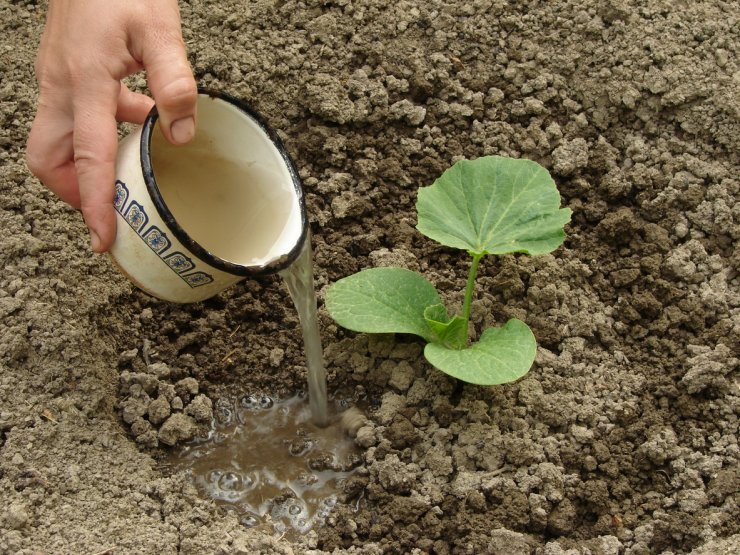
Watering young pumpkin plants.
Watering Your Pumpkin Plants
Once your pumpkins are settled in—whether it’s in a container, a raised bed, or open ground—consistency is key when it comes to watering. If you don’t get rain on a regular basis, go out and give your pumpkins a good drink of water. Pumpkins like soil that’s moist, but not soggy. Don’t kill your pumpkin plants with kindness. Water, yes—just not too much.
In general, water deeply about once or twice a week, so your pumpkin vines get about 1 to 2 inches of water. It’s better to water deeply a couple times a week than to water a little each day. Those deep drinks of water help keep the roots strong. If the top of the soil is just a little dry, that’s OK. Pumpkins will tolerate a little bit of dryness, but don’t let them completely dry out—this is a special hazard if you’re growing pumpkins in containers.
It’s always best to water in the morning, so your plants can soak up the water and put it to work. Watering earlier in the day also gives the sun time to burn off any water on the leaves. When you water, aim for the base of the plant. Try not to soak the leaves (unless you’re blasting off pests); that can expose the plant to fungal infection.
Weeding Your Pumpkin Plants
If you’ve planted in raised beds or containers, weeds shouldn’t be much of a problem. If you see weeds, pull them up early and often—but be gentle about it. Loosen the soil gently around your plants, especially when they’re young, so you don’t disturb their roots. For raised beds and containers, this is another good reason to get yourself some fresh garden soil; it’s one less aggravation to deal with during the growing season.
If you’re growing your pumpkins directly in the open ground, properly preparing your soil is still an excellent preventive measure against the emergence of weeds. When you till or cultivate the area where you’ll plant your pumpkins, remove all weeds and debris before you put seed to soil.
Fertilizing Your Pumpkin Plants
Start fertilizing your pumpkins when the plants are about a foot tall, and before the vines start taking off. Look for a fertilizer that’s higher in phosphate and potassium, and lower in nitrogen. Heavy applications of nitrogen will just spur heavy leaf growth to the detriment of good pumpkin growth. Look for a an all-purpose fertilizer that’s listed as 2-6-6 (nitrogen-phosphorous-potassium).
How often do you water, fertilize, or weed your pumpkins? Do you have any particular challenges growing pumpkins? Please tell us your tips for nurturing healthy pumpkins by commenting below.


 Previous
Previous

